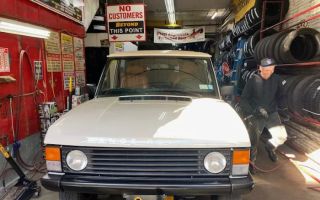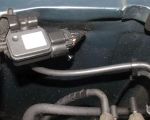Tips for Safe Driving on Steep Hills: A Guide for Drivers
Driving on steep hills can be a daunting experience for many drivers, whether you're navigating hilly terrain on a road trip or commuting in an area known for its steep inclines. Not only do these slopes challenge your vehicle’s ability to maintain control, but they also require skillful handling to ensure safety for both you and others on the road. Fortunately, with the right preparation and techniques, you can confidently drive on steep hills without putting yourself in a risky situation. In this article, we’ll walk you through some crucial tips for safe driving on steep hills, from proper car maintenance to essential driving techniques.

Hillside Honda Service Center
13907 Hillside Ave., Jamaica, NY 11435, USA
1. Understand the Importance of Proper Car Maintenance
Before heading into hilly terrain, it’s crucial to make sure your car is in optimal condition. Your vehicle’s brakes, tires, and engine play a significant role in ensuring safe navigation on steep hills. If any of these systems are compromised, you could face serious safety risks.
- Brakes: Ensure that your brake system is functioning properly. Regular brake checks are essential, especially for the pads and fluid. Overheating brakes on steep descents can cause them to fail, leading to dangerous situations.
- Tires: Tires with low tread can reduce grip, making it harder for your vehicle to maintain control on steep, slippery inclines. Always check the tire pressure and tread before heading out on hilly roads.
- Engine Health: Steep hills put additional strain on your car’s engine. Make sure your vehicle’s engine is in good condition, and check the coolant levels to prevent overheating.
2. Use the Right Gears for Uphill and Downhill Driving
One of the most important skills to master when driving on steep hills is using the correct gears. This is especially important on manual transmission vehicles, but even for automatic cars, understanding gear selection can significantly improve safety and performance.
- Uphill Driving: When driving uphill, shift into a lower gear to maintain power and avoid overloading the engine. Lower gears provide more torque, which helps the car climb without straining the engine.
- Downhill Driving: For downhill driving, use engine braking by shifting into a lower gear. This helps slow your car without overusing the brakes. If you rely solely on your brakes, they could overheat, especially on long, steep descents.
3. Maintain a Safe Following Distance
When driving on steep hills, it’s crucial to maintain a safe following distance from other vehicles. On an incline, your car’s ability to stop may be delayed due to the extra strain on the engine, and stopping quickly in case of an emergency could be more difficult. If you are too close to the vehicle in front of you, you may not have enough time to react to sudden stops or obstacles.
Ensure that you leave plenty of room between you and the car in front, especially if you’re driving downhill. This gives you enough time to stop safely if the car in front of you makes a sudden maneuver.

Puente Hills Ford Service
17340 Gale Ave, City of Industry, CA 91748, USA
4. Control Your Speed and Avoid Riding the Brakes
One common mistake when driving downhill on steep hills is riding the brakes, which can cause brake overheating and failure. Instead, use your vehicle’s lower gears to control your speed and avoid excessive braking. If you need to apply the brakes, do so in short bursts rather than continuous pressure.
In addition, when climbing a hill, avoid accelerating too quickly. Instead, accelerate gradually to maintain a steady speed. Abrupt acceleration can cause your vehicle to lose traction, especially on slippery or uneven surfaces.
5. Know When to Stop and Rest
If you're feeling fatigued or unsure about driving on steep hills, it’s important to recognize when you need to take a break. Continuous driving in challenging conditions can increase stress levels and impair decision-making. If you’re navigating a particularly steep or winding road, stop at a safe area to rest and refocus before continuing your journey.
For example, on a long road trip, plan stops to give yourself a break. This will not only help you stay alert but also ensure that your vehicle remains in optimal condition for the journey ahead.
6. Practice Hill Starts and Stops
When starting on a steep incline, it can be difficult to prevent your car from rolling backward. If you have a manual transmission, use the handbrake to hold the car in place until you’re ready to release it and accelerate. For automatic transmissions, ensure you’re using the “drive” mode before applying the gas pedal.
If you're on a steep hill, stop in a safe area, and practice hill starts and stops in a controlled environment. This will help you feel more confident when you're faced with a steep incline on the road.
7. Consider Upgrading Your Vehicle for Tougher Terrain
If you frequently drive in hilly or mountainous areas, it may be worth considering upgrading your vehicle. Four-wheel drive vehicles, for instance, offer improved traction and handling on steep terrain. Additionally, newer vehicles come with advanced safety features, such as automatic emergency braking and stability control, which can provide an extra layer of security when driving on hills.
8. Conclusion: Safety First When Driving on Steep Hills
Driving on steep hills requires extra caution, knowledge, and preparation. By ensuring your vehicle is properly maintained, using the correct gears, maintaining a safe distance from other vehicles, and controlling your speed, you can safely navigate even the steepest roads. Always remember to take breaks and practice your skills when driving in hilly areas to build confidence.
For any unforeseen vehicle issues or roadside assistance needs during your hilly travels, remember that [Rescue & Towing](https://www.rescueandtowing.com) is here to provide professional towing and roadside support services. Stay safe on the road, and enjoy the journey!




























